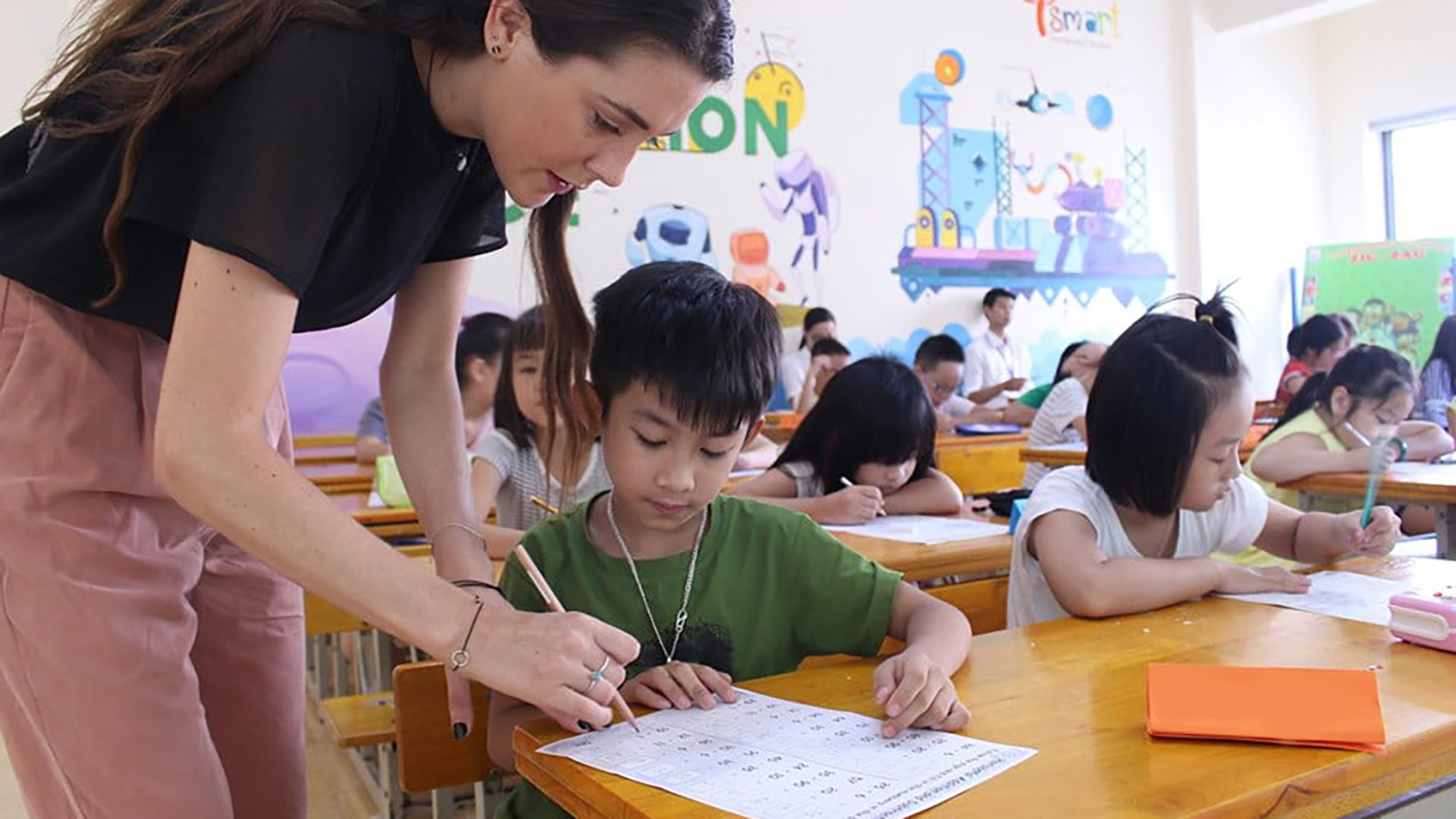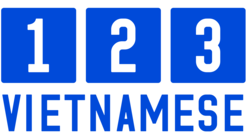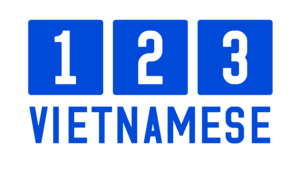
A new approach to teach Vietnamese: Vietnamese + English
1. Introduction
The establishment and development of CAFTA (China – ASEAN Free Trade Area) has brought great opportunities and challenges to Guangxi, China in all fields including higher education. In this historical era, it is an urgent task for colleges and universities in Guangxi to cultivate graduates of foreign languages, who can meet the need of ASEAN countries and reach the requirements of cooperation and competition in this region. In Guangxi Zhuang Autonomous Region, besides Guangxi University for Nationalities with a long history and experience in Vietnamese teaching, some other colleges also join the group of training Vietnamese majors with great enthusiasm in recent years. This paper takes Guangxi University for an example in the reform of Vietnamese teaching. With an aim to cultivate Vietnamese graduates of high quality, Guangxi University, one of the 100 key universities in China, established Southeast Asian Languages Department in 2007 and began to enroll Vietnamese majors in the fall of the same year. The Vietnamese undergraduates will be trained with language proficiency and rich relevant knowledge, say, trade, laws, marketing and international exchange. When they graduate, those students will add vigor for the development of CAFTA and CAEXPO (China – ASEAN Expo). Meanwhile we realize the competition and challenge from other colleges and universities. Therefore we should have our own strong points and characteristics in teaching Vietnamese in order to survive in this era. With exploration of several years, we broke with teaching tradition and found one new approach, that is, Vietnamese plus English, which is suitable for social need and good for our development. The good points of this approach do not end at one. It owes distinguishing characteristics, moreover, it is good for improving teaching and making use of language resources reasonably. More important, this approach can better meet the need of talent competition on future international market.
2. The Necessity for the New Approach
The new approach, Vietnamese + English, is here proposed. The core of the approach is that Vietnamese is primary and English is secondary in the course of teaching and learning. It means that the main language used in the classroom teaching is Vietnamese and the supplementary language is English. Sometimes, in order to meet the need of teaching, Vietnamese and English are equal in significance. The aim of this approach is to train the students with good command in Vietnamese and English, which is necessary to meet the requirements for Vietnamese talents in the Region and the country.
2.1. The Need for Development of China – ASEAN
With the development of relations between China and ASEAN countries, the integration and internationalization of ASEAN, the Vietnamese graduates trained by Guangxi University should be excellent in language proficiency. They should not only master Vietnamese but also have good ability in English communication.
First of all, variety is the feature of the language phenomenon in ASEAN countries. However, one fact is undeniable that the English language conquers an outstanding place in each country besides the national language. Therefore, it is necessary to learn and use the main or official languages of the ASEAN countries for it is essentially efficient communication. Second, English has been long and widely used in ASEAN countries including Vietnam for historical reasons. Meanwhile, ASEAN economic form is highly extraverted so that foreign trade and tourism play an important role in national economy.
What’s more, the main trading partners for ASEAN countries are those developed countries in Europe and America. So it is evident that English plays a decisive role in ASEAN. Last, with enhancing in exchanges in all fields between ASEAN and other countries in the world, ASEAN countries propose to keep ethnic characteristics and maintain fluent communication with the outside world at the same time. We can see that so many young students in ASEAN have good English proficiency as well as their native languages. Under these circumstances, the teaching approach for Vietnamese major should be undoubtedly rooted in the language characteristics of the ASEAN countries. In other words, students should learn ASEAN languages as required, here is the Vietnamese language, at the same time they are required to have good communicative ability in English.
2.2. The Need for Talent Training
To enhance the competitive force for Vietnamese graduates, one of the efficient ways is to reform language teaching. With the new approach of Vietnamese plus English, the graduates will be able to increase their competitive power to face challenge and competition from other colleges in the country.
First, as far as relationship of CAFTA is concerned, not only Guangxi Region can play an active part but also other provinces like Yunnan, Fujian and Guangdong have its own strength. These provinces are active in cooperation with the ASEAN countries and develop strategies for talent training. Faced up to fierce competition for talents, Guangxi University needs some adjustments in language teaching, especially in Vietnamese teaching. One of the points lies in properly dealing with relationship between Vietnamese and English. The approach that English is paralleled with Vietnamese not only exhibits the unique features of the school and satisfies the need of language teaching in the Region. The graduates we train possess English and Vietnamese as well will have more job opportunities and competitive force.
Besides the domestic competition, our graduates still have to compete with graduates from the ASEAN countries. Take Thailand as an example. In order to help students with wider international horizon and more competition, universities in Thailand develop international projects and pay great emphasis on English teaching and learning. They open more international courses, in which English is the only language for teaching use.
Many other courses are taught in English directly. In some universities only English is used to teach. Some even introduce textbooks from the key universities in the USA or the UK. Singapore sets a good example in implementing multilingual language policy. Consequently, the Singapore young students can master English and one of the national languages as well so that its national competitive force is the strongest among the ASEAN countries. Vietnamese National University – Hanoi, the most famous university in Vietnam, also opened international courses in some colleges in recent years, which symbolizes its great step in internationalization in educational reform. In real situation, we find that some international enterprises even set higher requirements and ask job candidates to interpret or translate among Vietnamese, English and Chinese. With development in economy, Vietnam deepens cooperation with other countries in the world. We can safely say that those graduates who have good command of Vietnamese, English and Chinese will be fairly popular in the regional and international cooperation in the near future.
The students of Vietnamese major we train will have to leave the school and participate in the competition of talents from other countries. Under current circumstances, some ASEAN countries have go ahead of us in foreign language teaching. If we sill follow the traditional approach of teaching Vietnamese, it is hardly possible to train qualified graduates who can face up to the competition from the other universities at home and abroad.
Therefore, the new teaching approach of Vietnamese plus English is a good way to help the University to exhibit features and strengthen competition in recent years.
2.3. The Need to Keep the State’s Image
In the long term, the graduates we train will play a part in keeping the state’s image and even in enhancing the power of discourse. As we know, the Western media sometimes produce fake reports about ASEAN countries, which affects the images of China and Vietnam in the Region. To communicate with the outside world more effectively, we need those graduates who can have good command of three languages, that is, Vietnamese, Chinese and English as to publicize economic and social achievements in China and Vietnam. So the graduates should have global thinking and wide vision. They are required to master Chinese, Vietnamese and English in order to enter into the mainstream society and the world.
In one word, bilateral relations between China and Vietnam and the development of the CAFTA set higher standard for future Vietnamese – Chinese talents. In new situations, our teaching should adjust to the main trend of the society. We should learn good experiences in foreign language teaching from other universities home and abroad. At the same time, we should make good use of teaching resources and improve teaching so that we can train qualified graduates to meet the need of social development. That is the reason why we should implement the new approach.
3. Characteristics and Feasibility of the New Approach
3.1. Characteristics of the New Approach
The new approach of Vietnamese plus English is distinguished. First, the learners we enroll are different from those in other regions in China. Due to geographical location, the majority of our learners know the local languages such as Cantonese or Zhuang dialect, which is advantageous for their Vietnamese learning, especially for their pronunciation training. Generally speaking, all students begin to learn Vietnamese as a foreign language from the beginning of the college. Meanwhile, they have good English proficiency before they enter the University. Second, teaching and learning is double – leveled. The first level here is referred to Vietnamese and the second is English. The first one is visible and the second one invisible. In class teaching, Vietnamese and English are used bilingually sometimes. These two languages are not mother tongues for the learners, as a matter of fact, the learners are exposed to the environment of two foreign languages. The relationship between English and Vietnamese are interdependent in the course of teaching and learning. The final goal of the new approach is to reach aim of two – way learning through the using of the two foreign languages. When the learners are junior and senior they will gradually develop their capacity in trilingualism, that is, to communicate efficiently in their mother tongue (Chinese), Vietnamese and English. The graduates will be able to shift freely among these three languages according to different jobs and working environment.
3.2 The Feasibility of the New Approach
The new approach sets higher requirements for the University in actual work. Guangxi University has its own strengths in implementing the new approach.
3.2.1 Good Environment in Language Learning
The good environment in language teaching and learning first of all benefits from the academic atmosphere. Guangxi University has long attached great importance to reforming and development in foreign language teaching. It has been making great progress in curriculum design, textbook compiling and teachers’ training. Meanwhile, the University pays much attention to training learners’ practical capability in learning foreign languages including Vietnamese. We encourage the undergraduates to practice what they learn in the classroom in authentic communication with people from Vietnam and other countries. As we all know, the CAEXPO (China – ASEAN EXPO) is held annually in Nanning, the capital city of Guangxi Zhuang Autonomous Region. The CAEXPO attracts not only Vietnamese friends but also friends from all over the world to Nanning for business or traveling. Every year a great number of tourists and businessmen from Vietnam or other countries come to Guangxi. In other words, the good language environment opens up more opportunities for Vietnamese learners to use and practice Vietnamese and English they learn in the classroom. Lastly, learning and using inside and outside the classroom improve their language proficiency. We know that a foreign language is learned and improved in real situation.
3.2.2 Language strength of the ASEAN Countries and Good Environment for English learning
Some dialects for ethnic groups in Guangxi Zhuang Autonomous Region share the same roots with some languages in the ASEAN countries. For example, the zhuang Dialect, Dong Dialect, Buyi Dialect, Shui Dialect in Guangxi Region have roots with the languages of Vietnamese, Thai and Laotian. The Zhuang people and the Dong people have far-reaching relationship with some nationalities in the Southeast Asian countries. The learners who can speak the Zhuang Dialect or Chinese Sothern Dialect, say Cantonese, have etymological strength in learning the Southeast Asian languages, for example Vietnamese language. With this strength and with the help of well targeted training, learners are able to have good command of linguistic skills of the foreign language during the first two years of learning in the college. Moreover, English is the required course for Chinese students from primary school to college. The Vietnamese majors have already possessed a certain number of English words, sentence structures and some cultural background related with the West. They have good ability in English listening, speaking, reading and writing. During the four years at University, students have more opportunities to use English in real communication with their partners and teachers. Therefore, it is feasible to apply English and Vietnamese for class teaching. One of the good points by doing so is to help students keep learning English, a foreign language that the Chinese students begin to learn at the age of 6 and endeavor so much time and energy.
4. Difficulties and Suggestions
4.1 Difficulties We Meet
We meet some difficulties in real situations when we practice the new teaching approach.
First, there is no previous teaching model to follow. The Vietnamese language has been taught in China for more than five decades. Grammar-based teaching is the traditional teaching method that has been long and broadly practiced in the country. It is admitted that the teaching method has made contribution to Vietnamese teaching in China during the past years. However, the method can not meet the need of social development.
When we practice the new teaching approach to train Vietnamese + English talents, we find that no previous models to follow or learn from. Our starting point is that education should satisfy the need of the society. We endeavor to set four or five years to practice this teaching reform to seek a new and practical road for Vietnamese teaching in China.
Second, we lack of right text books. In China, some universities still use the text books compiled by Peking University for Vietnamese teaching for so many years. In recent years, some universities work hard to compile new textbooks for Vietnamese teaching including Vietnamese Writing, Vietnamese Reading, Vietnamese – Chinese Translation. These new textbooks focus on just the two languages, Vietnamese and Chinese. English seems to be separated from teaching and learning of Vietnamese. Since we set a new goal for language teaching, the teaching materials should reflect the new teaching concepts. What’s more, to train qualified Vietnamese + English graduates, the teaching materials should be up to date and practical. One fixed text book, which may have been used for years, can not catch up with dramatic changes of the time so that it can not meet the need of social development. At present, it is uneasy to get text books of trilingual Vietnamese – Chinese – English that cover various topics and be right for language teaching. Therefore, the teachers may have to spend much more time and energy searching for the right materials then compiling them for teaching.
Third, the time in class for language learning is limited. Students have to attend many other academic courses as required. As a result, the time in class for Vietnamese + English training is quite limited. A qualified linguistic learner would not be produced with just several hours of practice in class. It is unpractical and impossible to add more academic hours in current situations. One fact should be kept in mind that the students begin to learn Vietnamese only when they enter the University. To reach the goal, some practical steps should be taken.
At present, learners’ autonomous learning will be a good way to solve the problem. Autonomous learning is a school of education which sees learners as individuals who can and should be autonomous, that is, responsible for their own learning. Nowadays, autonomous learning is becoming more important in learning, especially for the students at college. Autonomous learning helps students develop their self-consciousness, vision and practicality. In this case, neither should the teachers baby-sit learners, nor the teachers release management and direction for learners’ study. Foreign language learning needs sufficient time to practice in and out of class. Practice out of class should be mainly dependent on learners while teachers should provide learning strategies, materials, technological and emotional support to direct learners. Thanks to the facilities offered by the University and the Internet, learners’ autonomous learning becomes effective and efficient for the Vietnamese majors.
4.2 Suggestions for these Problems
In order to solve these problems, this paper proposes the following suggestions.
Firstly, improve the curriculum and reform teaching contents to make a training mode at different stages.
Based on real conditions, we should reform and improve the curriculum to adjust to multi-cultural development and internationalization of ASEAN. We have to adsorb methodology and research in foreign language teaching home and abroad and exploit them effectively to our language teaching. Adhered to practical needs of CAEXPO and CAFTA, Vietnamese teaching should give prominence to practice and timeliness. Learners’ practice in language should be greatly encouraged. So we can make good use of international seminars, conferences and trade fairs which are held in Guangxi to create opportunities for our learners to practice bilingual or trilingual. And, in line with exchanges and development in terms of culture and economy between Vietnam and China, the language teaching should be designed and adjusted to different stages of the four years in college. During the first two years in college, Vietnamese listening, speaking, reading and writing are focused to train students with good language sense. For the last two years in college, Vietnamese teaching and learning are task-based and more practical. Tourist Vietnamese, Business Vietnamese, Journalist Vietnamese and the other topics which are closely related to the society are offered to the students. One highlight of the new teaching approach is that English is stressed and practiced during the whole process of language learning. In other words, students have to learn English for the four years in college. In China’s colleges and universities, non-English students are required to attend English classes only for the first two years with five teaching periods per week. But for the Vietnamese majors of the University are exposed to English learning environment for the whole four years, from which they will be greatly beneficial for their future career and life.
Secondly, train qualified teachers. Teachers’ training is necessary for advancement of the major. The teachers who are familiar with the new approach should master the Vietnamese language and at the same time be good at organizing class teaching and activity in English. Unluckily, such excellent teaching staff is still in need. So we propose that some Vietnamese teachers with good command in English should be trained properly and intensively with English teaching skills. Meanwhile, we may invite some native Vietnamese teachers who master English to teach at the University. In the long term, teachers’ training and learners’ training will be able to develop in the meantime.
Thirdly, evaluate students’ language proficiency scientifically. It is evident that students have differences in English and Vietnamese capacity at the beginning stage so that they should be estimated and tested scientifically. Two factors should be taken into consideration. One is their English proficiency and the other is their competence in language learning. The two factors can guarantee implementation of the new approach.
Last, deal with Vietnamese teaching and English teaching properly.
The big difficulty lies in how to deal with the relationship between the two foreign languages, English and Vietnamese, in the classroom teaching. In the class, the two languages are not equal at most of time. Their relationship is on the process of change. During the four years in the college, the teaching goal will decide the use and development of the two languages. At the beginning of the stage, the emphasis is put on teaching and learning of the Vietnamese language; English takes the secondary place. At the intermediate stage, for the students have learned communicative skills in Vietnamese, English and Vietnamese can be equal in the use. The stress of teaching is laid on training the learners’ bilingualism. At the higher stage, thinking in the two foreign languages should be fostered. Therefore, teachers should make adjustments to the use of the two languages during the four years.
5. Conclusion
The new teaching approach, Vietnamese plus English, is practicable and workable to train Vietnamese majors. The new approach can meet the fact that English is popular in Vietnam and the other ASEAN countries and satisfy the requirement for the language talents under new circumstances. One of the strength for the new approach is that English learning is continuous during the four years in the college. Students have more opportunities to improve their English communicative ability while they take Vietnamese as their major. Besides language learning, students should enrich their vision for related knowledge in order to play an active part in the future jobs. In the meantime, the new approach has broken the traditional approach of teaching Vietnamese. The teaching reform is beneficial for our researches in foreign language teaching and making good use of language resources to train Vietnamese – Chinese talents, who can develop their ability and face with competition and opportunities home and abroad.
Bibliography
Đại Học Quốc Gia Hà Nội, Kỷ yếu Hội thảo nâng cao chất lượng đào tạo toàn quốc lần thứ III. 2002
Kramsch,Claire, Context and Culture in Language Teaching, Shanghai: Shanghai Foreign Language Education Press, 1999.
Littlewood, W. Defining and Developing Autonomy in East Asian Contexts [J]. Applied Linguistics, 20 (1): 71-94, 1999.
陈碧兰, 梁双, 《非通用语种教学新尝试:东盟语种(越、泰语)+英语》,《东南 亚纵横》2010 年第 2 期。
董红:《全球化背景下的泰国高等教育改革初探》,《成都大学学报(教育科学版)》2009 年第 1 期。
王天舒:《新加坡的多语政策与双语教育》《国际关系学院学报》2008 年第 1 期。
The paper is one of the research results for the research program named Research and Practice of Training Vietnamese Translating and Interpreting Talents for Local Needs. The program is sponsored by Educational, Scienticfic Planning Program of Guangxi, China. (*本论文是广西教育科学规划课题“地方性越南语翻译人才教学模式的研究和实践”(2008 年度 C 类 03 号)的研究成果之一。) Abstract:
Nowadays, because of the further cooperation in progress between Guangxi and ASEAN countries, the graduates who are able to speak one of the languages of the ASEAN countries, say Vietnamese, and English are needed and welcome in the near future. As a consequence, the way to teach a non-universal language (Vietnamese) with English in China has been proposed in this paper. It’s presented the definition, causes, characteristics of the new method and has analyzed the advantages and disadvantages of it.
Author: Trần Bích Lan (Chen Bilan) PGS.TS, Foreign Languages College, Guangxi University, Nanning, China







